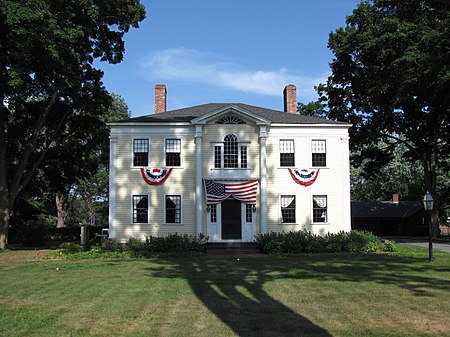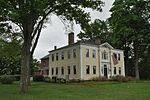Agawam, Massachusetts
1635 establishments in the Massachusetts Bay ColonyAgawam, MassachusettsCities in Hampden County, MassachusettsCities in MassachusettsMassachusetts populated places on the Connecticut River ... and 3 more
Populated places established in 1635Springfield metropolitan area, MassachusettsUse mdy dates from July 2023

Agawam is a city in Hampden County, Massachusetts, United States. The population was 28,692 at the 2020 census. Agawam sits on the western side of the Connecticut River, directly across from Springfield, Massachusetts. It is considered part of the Springfield Metropolitan Statistical Area, which is contiguous with the Knowledge Corridor area, the 2nd largest metropolitan area in New England. Agawam contains a subsection, Feeding Hills. The Six Flags New England amusement park is located in Agawam, on the banks of the Connecticut River. Agawam's ZIP code, 01001, is the lowest in the contiguous United States.
Excerpt from the Wikipedia article Agawam, Massachusetts (License: CC BY-SA 3.0, Authors, Images).Agawam, Massachusetts
Main Street,
Geographical coordinates (GPS) Address Nearby Places Show on map
Geographical coordinates (GPS)
| Latitude | Longitude |
|---|---|
| N 42.069444444444 ° | E -72.615277777778 ° |
Address
Main Street 700
01001
Massachusetts, United States
Open on Google Maps








